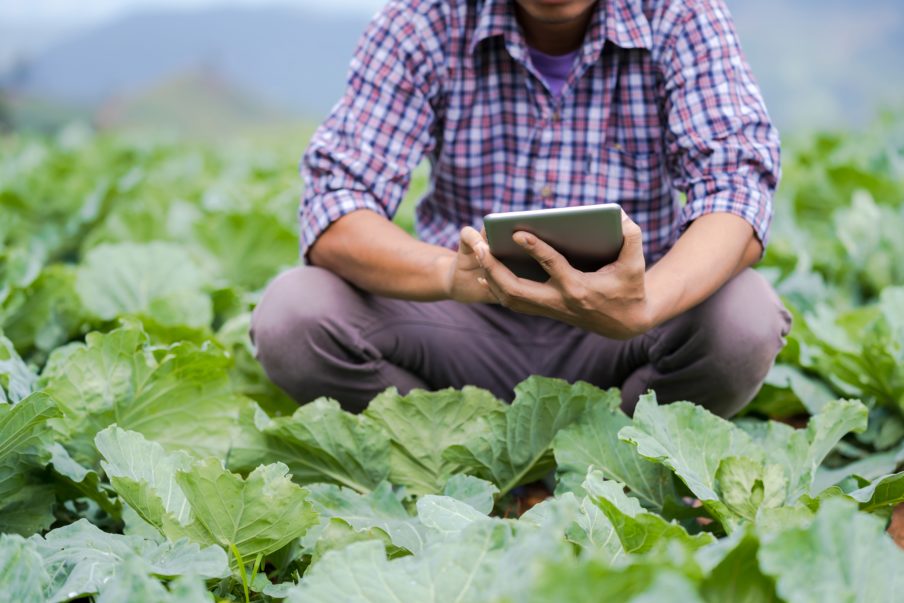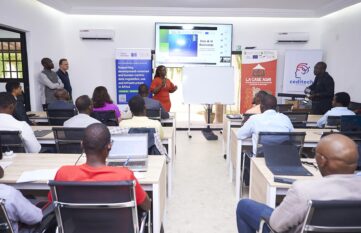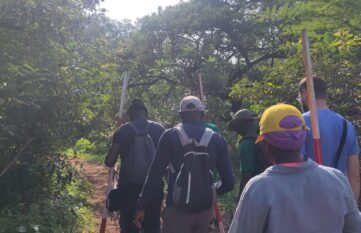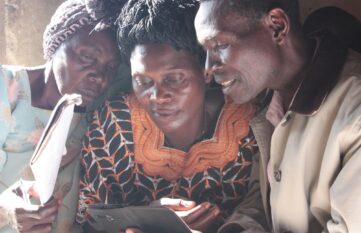While supply chains are becoming more and more transparent, regulation is progressing at the same time: the traceability of goods is increasingly required at every stage of production and distribution. Examples at the der Remote Management, Monitoring und Verification (RMMV) conference of KfW and BMZ at the beginning of February 2023 show how development cooperation supports this.
On which plantation was the coffee for the breakfast table harvested? Was rainforest felled for its cultivation? The transparency of the supply chains from cultivation to the consumer is a challenge, especially at the “last mile”, because many of the small farms in the producer countries do not yet have the technologies to provide proof of origin. However, this will be necessary in the future.
The EU has passed a regulation on deforestation-free products. It obliges companies to ensure through due diligence that relevant raw materials such as wood, soybeans, beef, coffee or palm oil offered in the EU have not led to deforestation or forest degradation in the country of production. To do this, companies must specify the exact location of production of the relevant raw materials. “The new standards make sustainability more competitive,” points out Toby Gardner, director Trase of the Stockholm Environment Institute. Much of the data for tracing is already available, but not in standardized form. Gardner therefore calls for this data to be harmonized across all governments and initiatives: “We have to find a gold standard.”
In this context, Matthew Himmel from COSA mentioned GIZ’s DIASCA initiative, in which common standards for digital solutions in agriculture are being developed with a large number of supply chain actors.
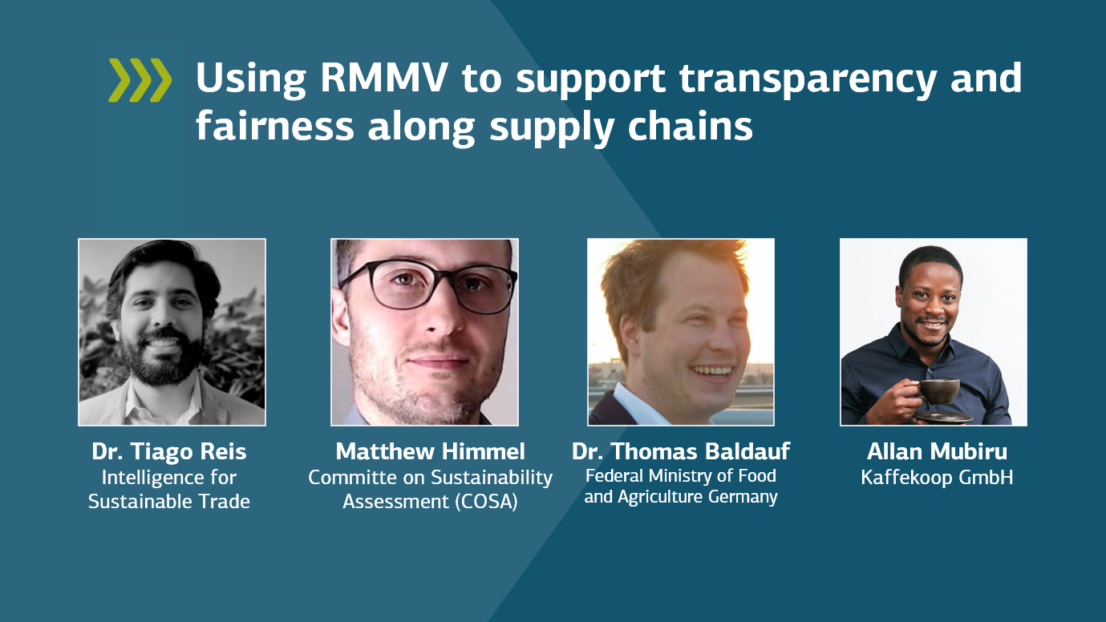
For Germany, Thomas Baldauf, policy advisor at the Federal Ministry of Food and Agriculture (BMEL), accompanied the EU negotiations on the EU regulation on deforestation-free supply chains. He sees the next step in enabling third parties to comply with the new regulation. “This will require funding; here the development banks play a crucial role.”
Several technology companies such as Koltiva or Farmforce support producers in providing proof of deforestation-free cultivation. Mapping the fields and determining GPS coordinates or field polygons are the first steps. The corresponding farmer apps also contain training modules for good agricultural practices or how to use digital technologies. The Eco.Business Fund strengthens financial intermediaries in promoting ecological and deforestation-free agricultural operations and in setting up the corresponding monitoring systems. The Helmholtz Research Center for Geosciences at the University of Potsdam uses a mixture of satellite data and locally collected information to provide detailed evidence of deforestation and its causes. The sophisticated model also allows carbon dioxide emissions to be monitored.
Thomas Baldauf dares to look into the future and says that supply chain traceability could also lead to new standards for project financing. “Transparency is the new route to green,” he summarizes.
Follow-Up to the RMMV Conference:
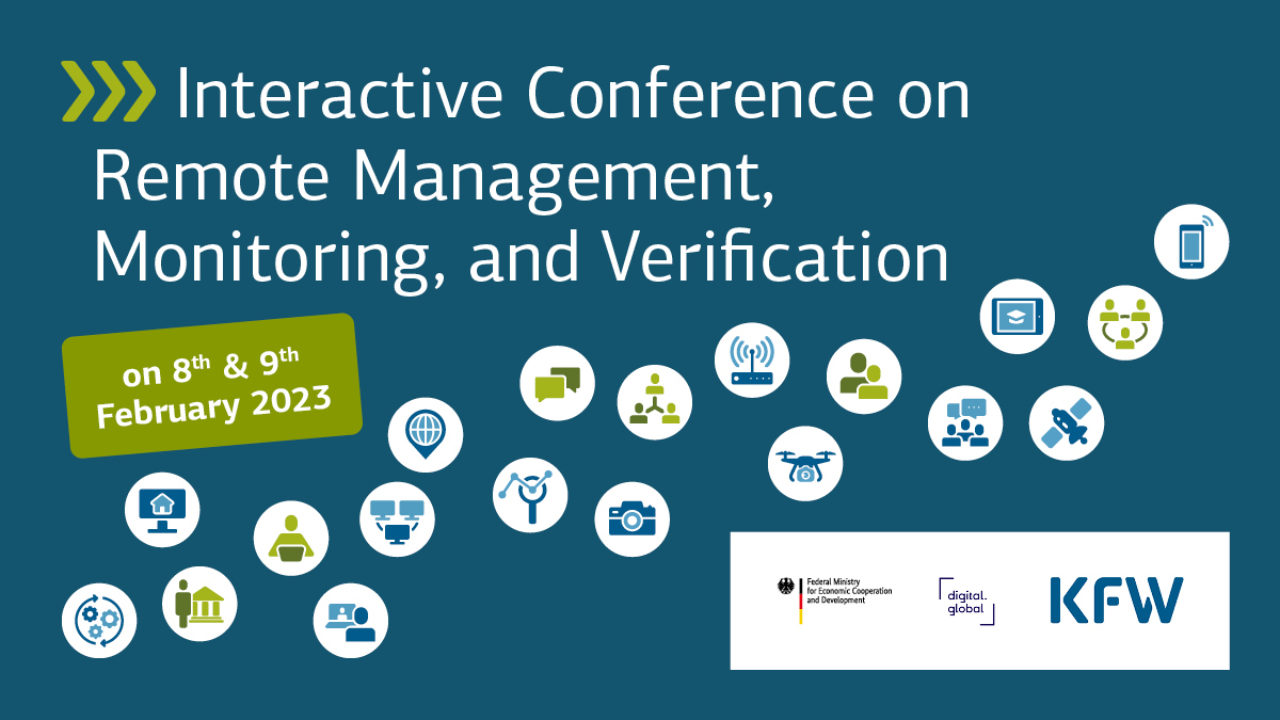
-
If you are interested in the video-recordings and presentations of the RMMV conference as well as the Booklet of the RMMV tools and service providers that participated in the event, please follow this link:
RMMV Conference Materials -
As announced during the RMMV conference, KfW is developing an open content repository on Github offering the RMMV Guidebook as a Digital Public Good to further develop its Digital4Development tools, project location data collection guidelines among others. We are looking forward to further developing these jointly with you here:
The RMMV Manual as Digital Public Good -
If you are interested in joining the discussion on this topic, please register for the mailing list of the network [digital.global]:
Mailing list
